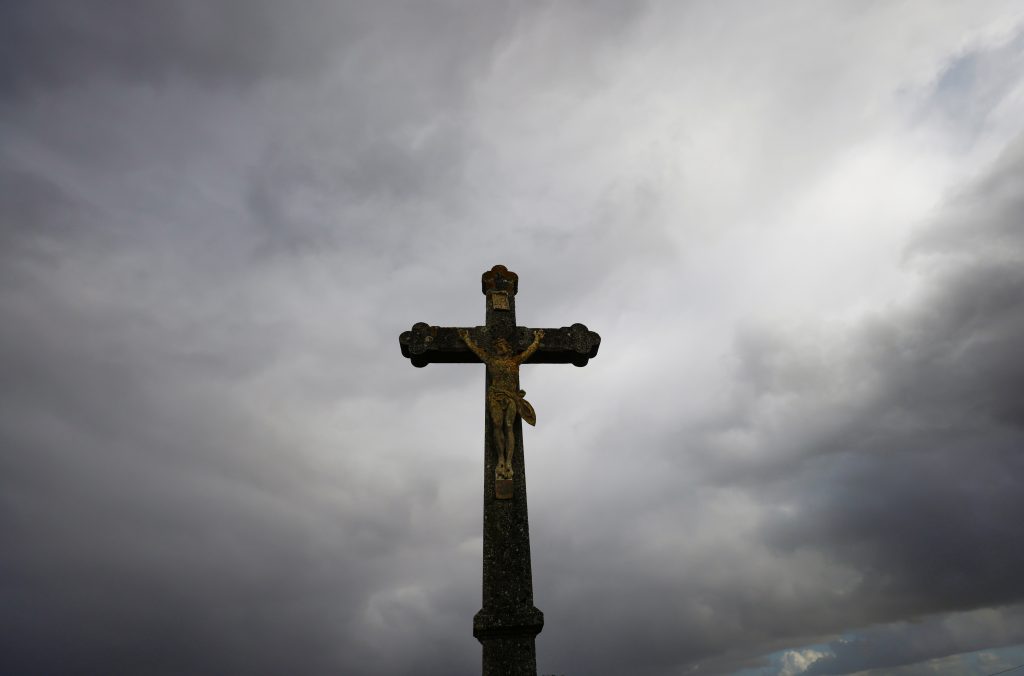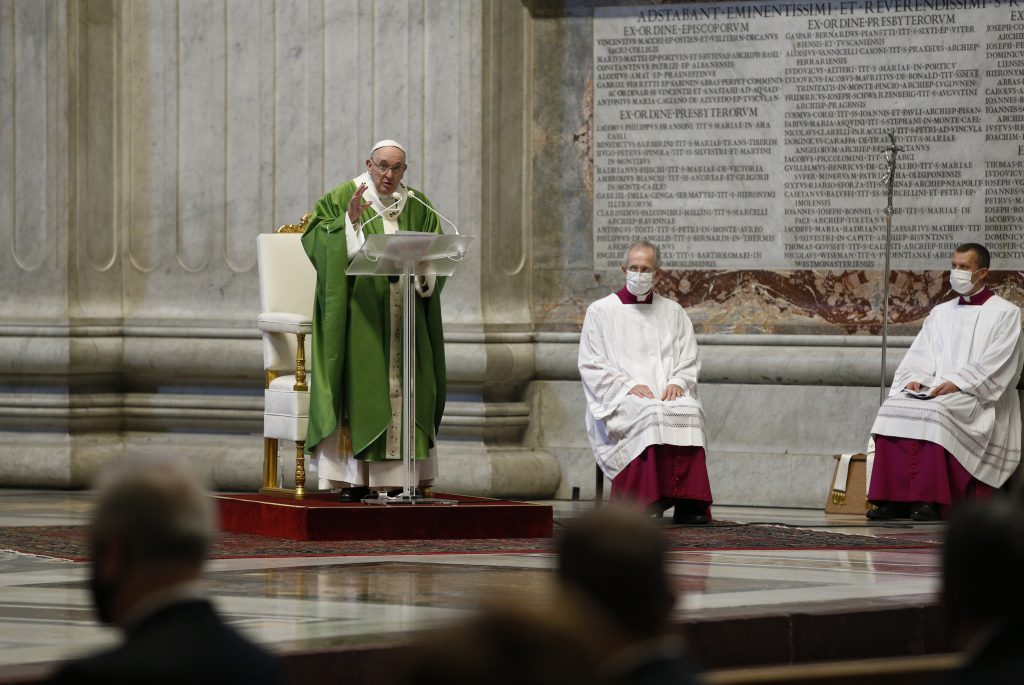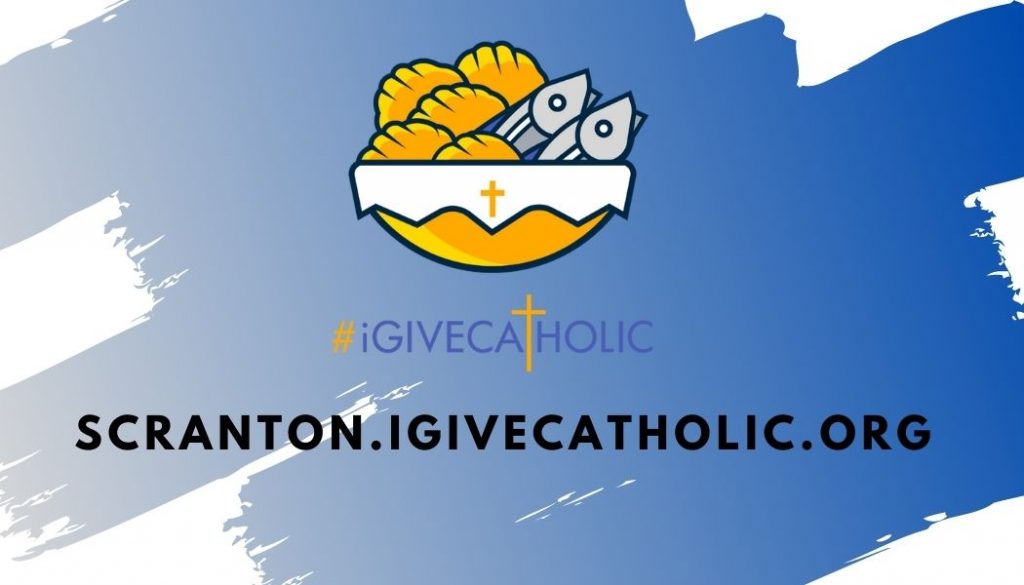
SCRANTON – Maybe you have visited your parish office recently and noticed a puzzle box with an image that looked a lot like your church.
Or perhaps you have spotted a parish Facebook post offering a chance to win a set of AirPods Pro wireless earbuds or a GoPro HERO action camera.
Or maybe you have already ventured over to the Scranton.igivecatholic.org website and seen the YETI Hopper Backflip Cooler, the Blackstone Adventure Ready Griddle and a host of other prizes.
Wondering what all this “stuff” is about?
This year, for the first time, the Diocese of Scranton has joined the nationwide #iGiveCatholic movement in conjunction with Giving Tuesday. The “stuff” is just a small part of the fun.
Celebrated annually on the Tuesday after Thanksgiving, Black Friday and Cyber Monday, #iGiveCatholic is the U.S. Catholic Church’s Giving Day that kicks off the charitable season and brings the Catholic community together to give thanks and give back. As the first-ever giving day created to celebrate our unique
Catholic heritage, #iGiveCatholic inspires faithful stewards to “Give Catholic” for #GivingTuesday, a global day of giving.
Declared “the most successful Catholic crowdfunding event to date” by the National Catholic Register, the goal of #iGiveCatholic is to rally the Catholic community in support of parishes, schools, and nonprofit ministries. All Catholic Dioceses are invited to participate, and this year the Diocese of Scranton signed on for the first time to promote the Diocesan Annual Appeal and give parishes an exciting way to increase participation and meet their goals earlier than usual.
“We were looking for a fresh new way to make the Appeal, well, more appealing,” Sandra Snyder, Diocesan Director of Foundation Relations and Special Events, explained. “This year, we really wanted to shift our focus to donor participation in addition to dollar goals, and when we learned about #iGiveCatholic, we thought it was the perfect platform for what we were trying to do.”
Those who have donated to the Diocese through the annual NEPA Gives event, which takes place each June in conjunction with the Scranton Area Community Foundation and the regional nonprofit community, will find the platform, Give Gab, quite familiar, Snyder said.
The leaderboard-style website, complete with digital donor walls, allows Dioceses to create customized giving pages and Diocesan organizations to create customized pages within the main page. This year, the Diocese of Scranton invited all of its parishes to create pages in an effort to attract new donors and engage loyal donors anew. Thirty-four parishes have created personal giving pages, and 17 of those 34 also have accepted the Diocese’s first-ever Puzzle Challenge. Each “puzzle parish” has received a personalized 500-piece puzzle and will ask parishioners to sponsor pieces through donations to the Appeal in an effort to complete the puzzle by Nov. 30 and compete for cash prizes.
The other 17 parishes have created personalized giving pages, and all remaining parishes have been asked to promote the generalized Diocesan Annual Appeal sub-page, with parishioners who donate crediting their parish in the comments section of the online giving form.
To energize the campaign, the Diocese is giving away four $1,000 cash prizes to the top-performing parishes as well as 14 individual prizes for which anyone who makes an online donation during the special challenge period will be eligible. All donors’ names will automatically be placed into a raffle.
The prize lineup includes: a YETI Hopper Backflip 24 Cooler, a Blackstone Adventure Ready Tabletop Griddle, a Heat Storm Infrared Tripod Patio Heater, a HydroFlask jug and mug, a pair of HydroFlask food bowls, three sets of customized YETI lowball cups, a Loaves and Fishes hand-painted Armenian Pottery bread plate, a nautically themed cheese wheel and serving set, a Tree of Life outdoor artistic wall hanging, a Catholic compass, a Faith, Hope and Love travel cup trio and a PacEarth 10-Liter Dry Bag.
“We chose an outdoors theme when selecting our prizes this year in keeping with the spirit of the times,” Snyder explained. “For all of the trials and tribulations the pandemic has brought us, we also know there were some silver linings. For many, the upside was a newfound love for God’s creation, for nature, for adventure, and for the great outdoors in general. Our prizes celebrate that spirit.”
A Facebook event page, https://www.facebook.com/iGiveCatholicDioceseofScranton, will allow anyone to follow our progress as well as learn about what Snyder called special “pop-up prize challenges” that will be offered throughout the event.
“We’ll be giving away a Dick’s gift card every day of the challenge, and all donors on that day will be eligible,” Snyder said. “Additionally, we’ll offer regional challenges with fun prizes donated by our parishes: think pierogies, meatballs and sauce, meatloaf dinners and much more. We really want to showcase the hard work and talents of so many dedicated parishioners by offering prizes that bring widespread attention to these important seasonal parish fundraisers.”
#iGiveCatholic is a bishop-led initiative in partnership with lay leaders in Catholic philanthropy. Directors are the Most Rev. Gregory M. Aymond, chairman, His Eminence Wilton Cardinal Gregory, and Most Rev. Joseph R. Kopacz.
Bishop Joseph C. Bambera released a video message to the faithful of the Diocese of Scranton just before #iGiveCatholic kicked off, encouraging parishioners to consider giving generously.
“This special giving period … offers us a special opportunity to support the work of our church,” Bishop Bambera said, noting that the campaign supports all Diocesan ministries. “The goal of #iGiveCatholic is to inspire our Catholic community to come together in an intentional way, supporting the ministries that help our families, our children, as well as the poor and the vulnerable. Together we are doing the work of the Lord and building his Kingdom.”

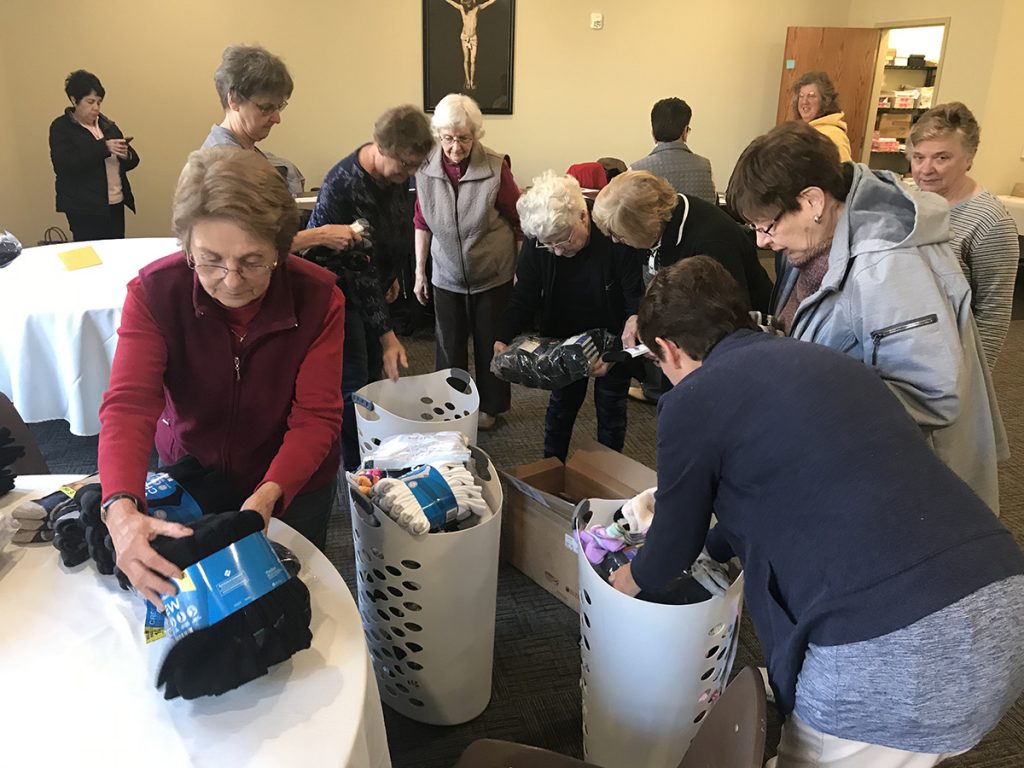
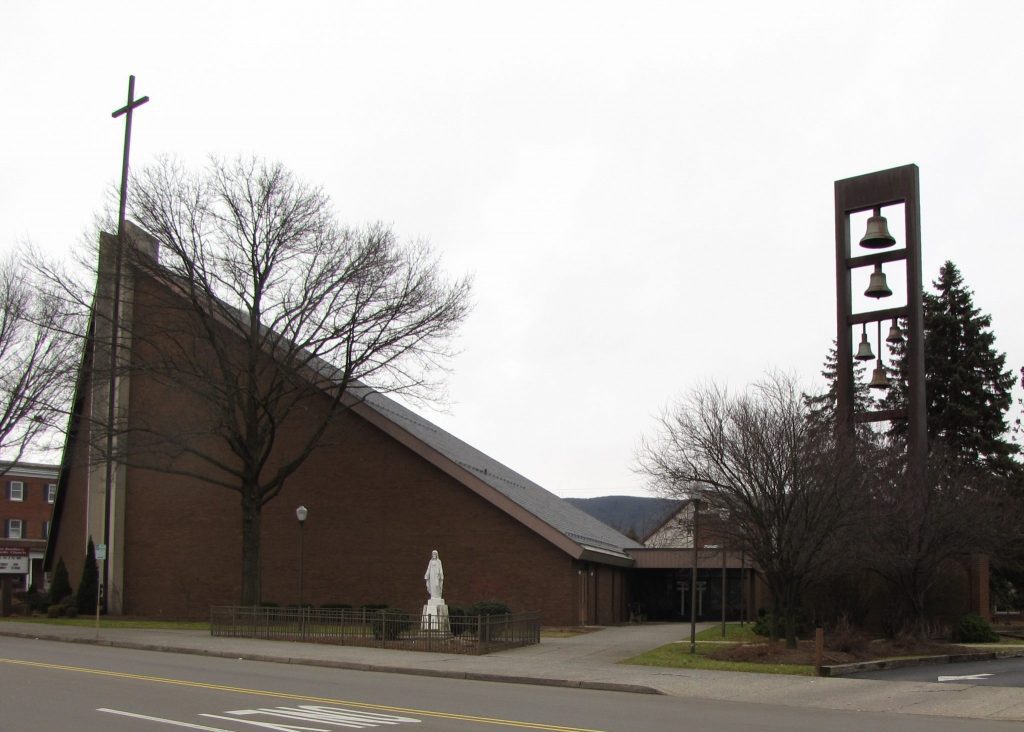
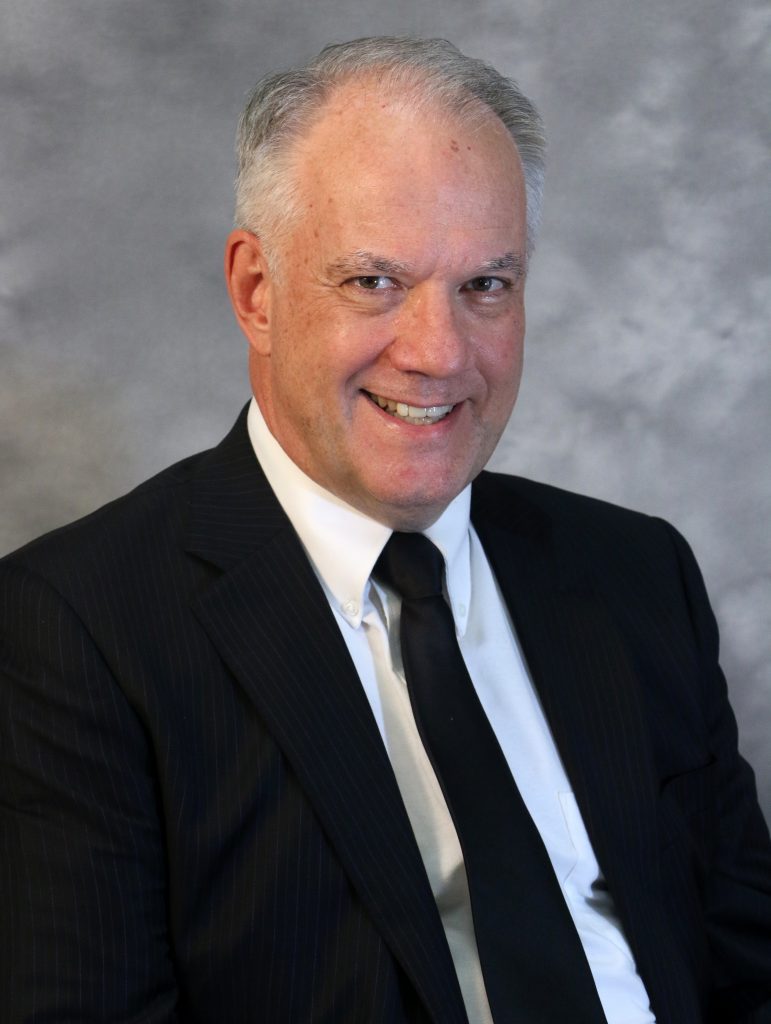
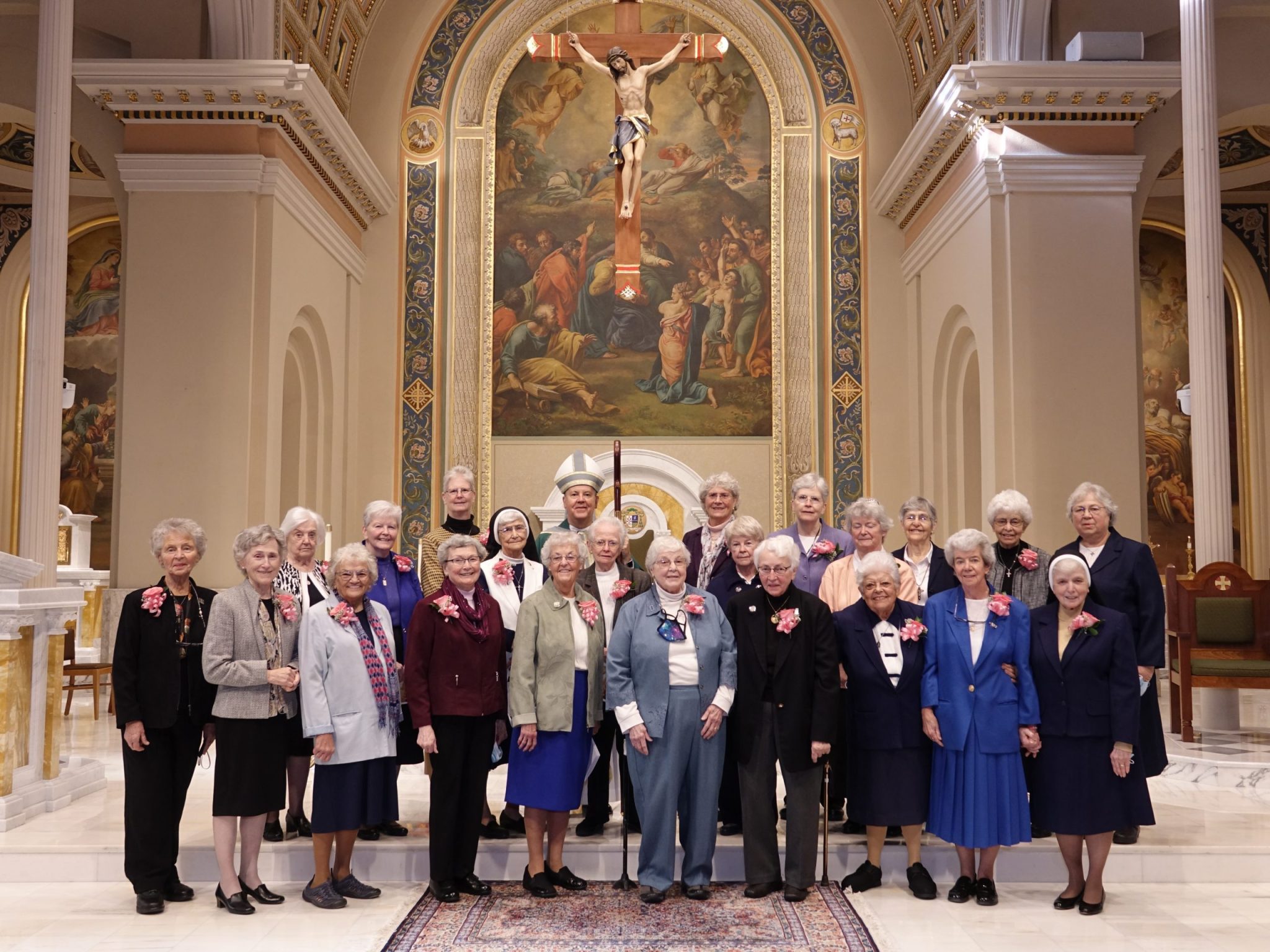
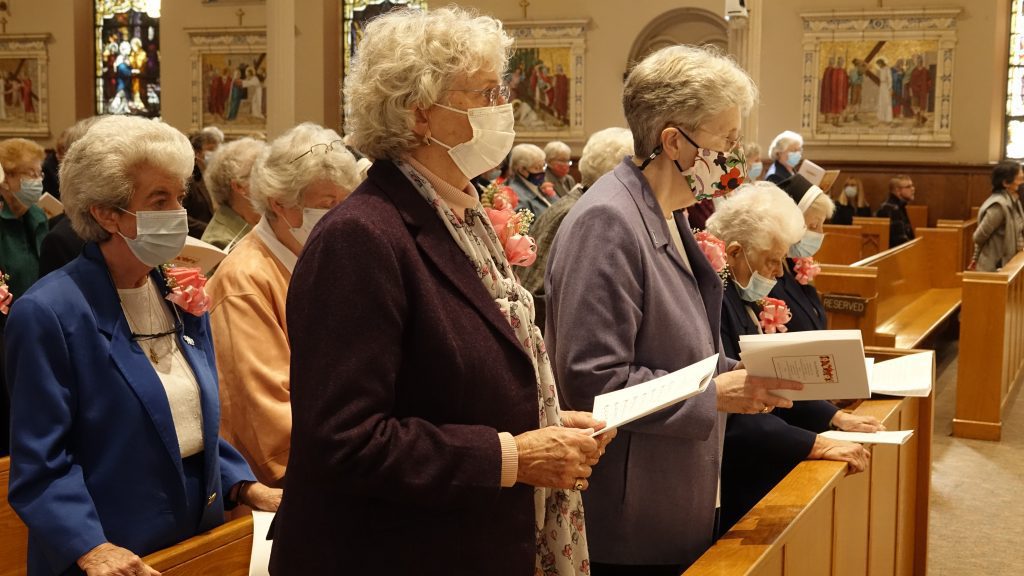
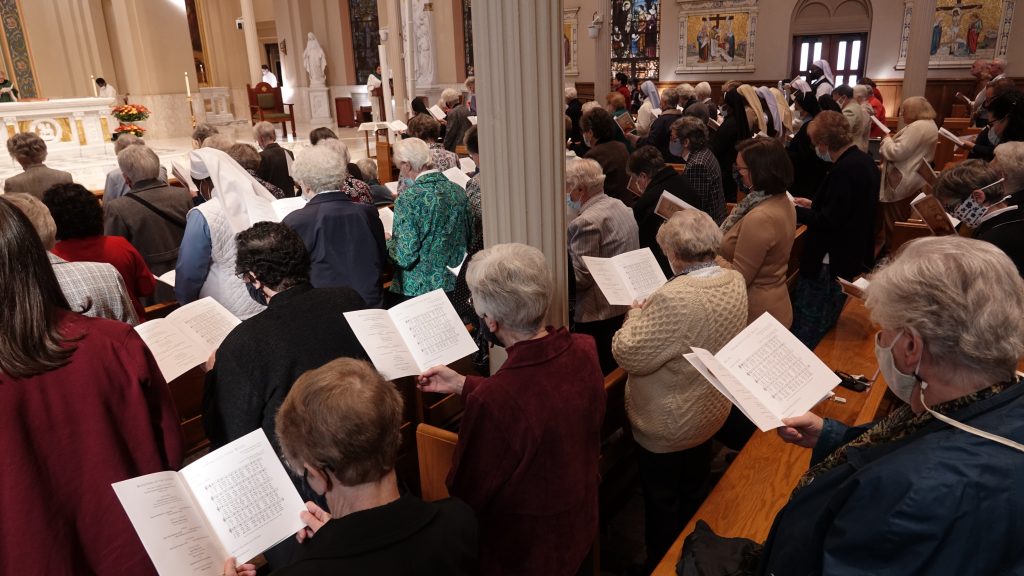
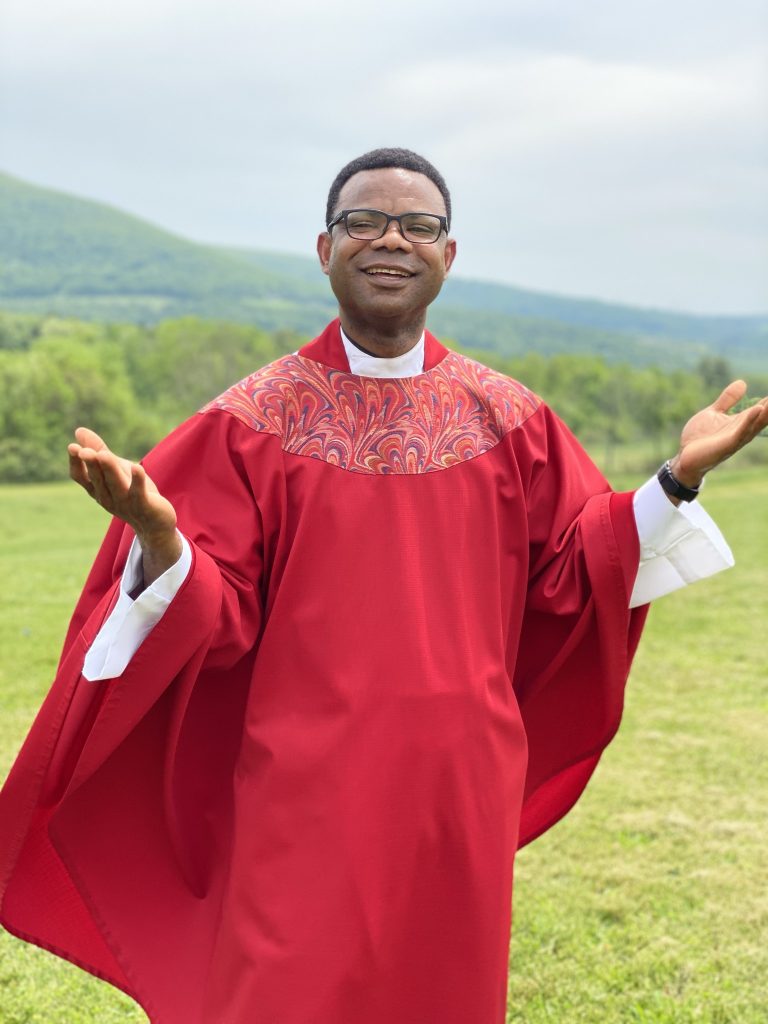
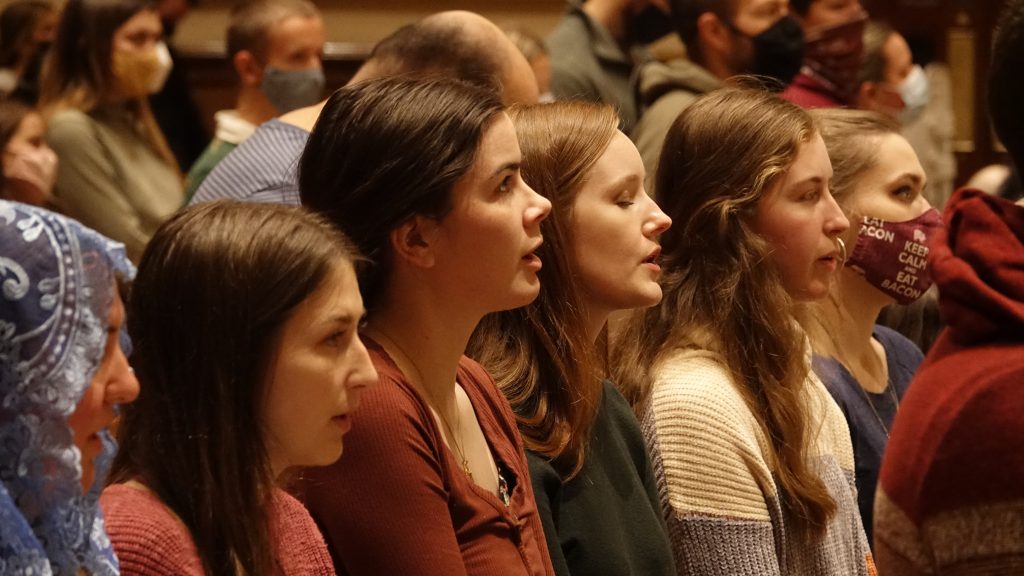
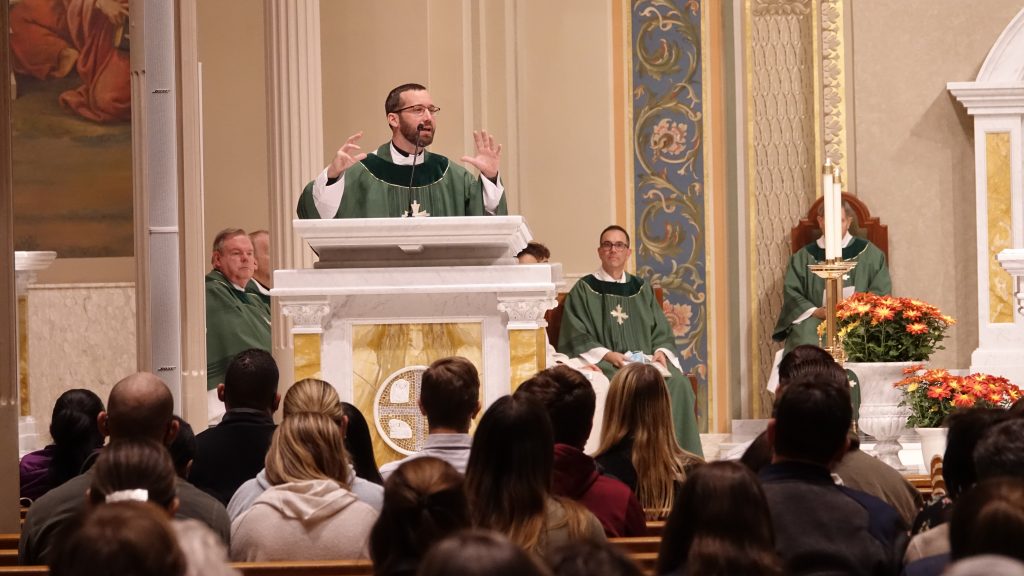 Mark Mass on Nov. 7, 2021, at the Cathedral of Saint Peter in Scranton. Father Alex Roche, Diocesan Director of Vocations and Seminarians, served as homilist.
Mark Mass on Nov. 7, 2021, at the Cathedral of Saint Peter in Scranton. Father Alex Roche, Diocesan Director of Vocations and Seminarians, served as homilist.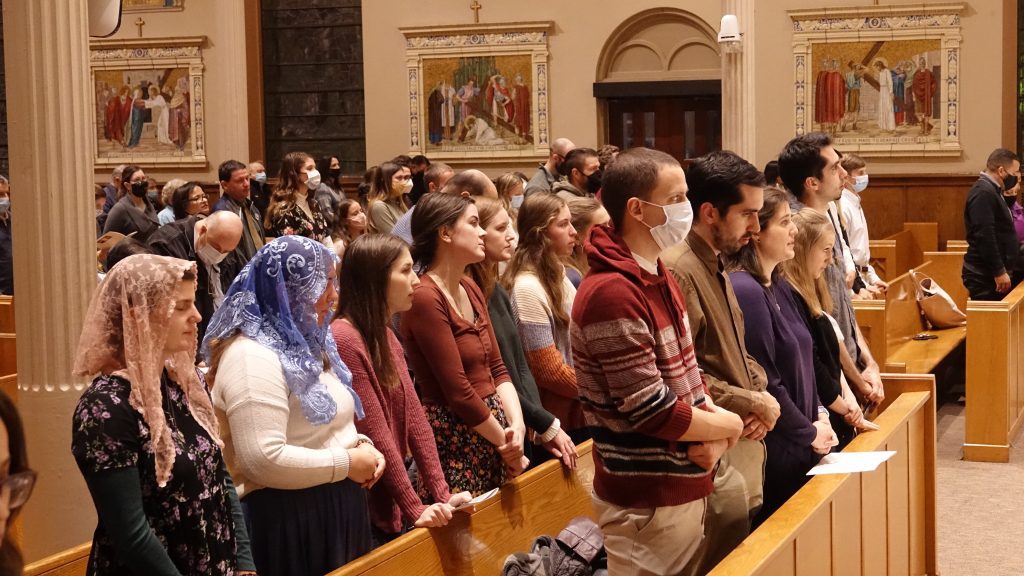 The Leave a Mark Mass helped to kick off National Vocation Awareness Week in the Diocese of Scranton. Young adults from around the diocese attended the event.
The Leave a Mark Mass helped to kick off National Vocation Awareness Week in the Diocese of Scranton. Young adults from around the diocese attended the event.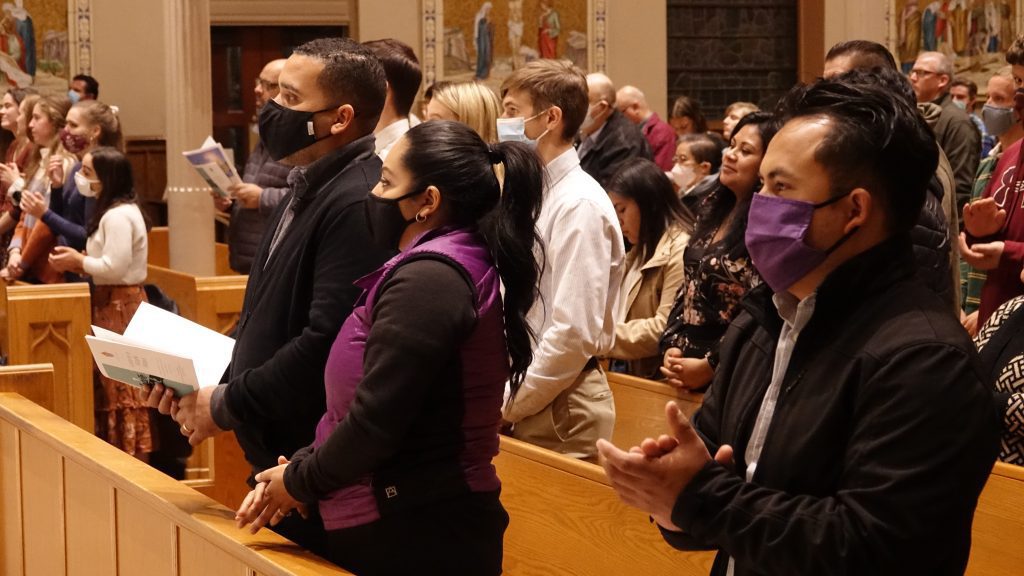 firmly, even more fervently, in what our God has promised us,” he said. “That is the time to lean in, that is the time to invest more.”
firmly, even more fervently, in what our God has promised us,” he said. “That is the time to lean in, that is the time to invest more.”
